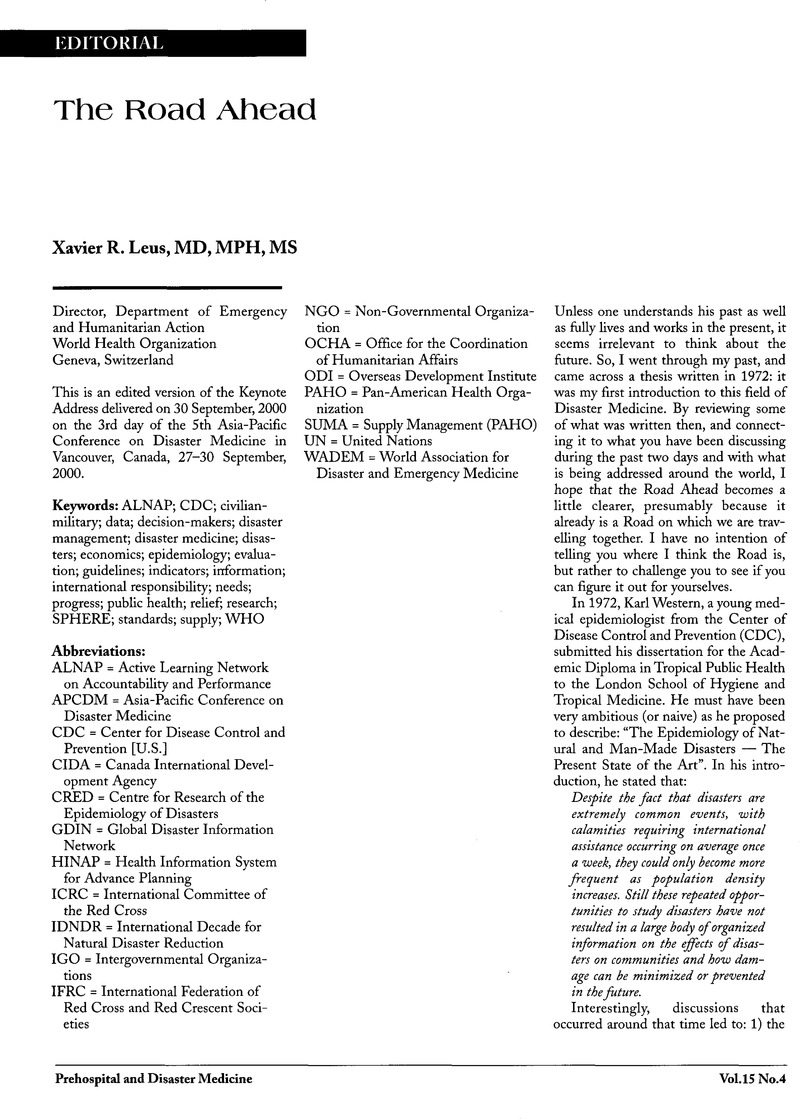Crossref Citations
This article has been cited by the following publications. This list is generated based on data provided by Crossref.
Aitken, Peter
Leggat, Peter A.
Robertson, Andrew G.
Harley, Hazel
Speare, Richard
and
Leclercq, Muriel G.
2011.
Education and Training of Australian Disaster Medical Assistance Team Members: Results of a National Survey.
Prehospital and Disaster Medicine,
Vol. 26,
Issue. 1,
p.
41.
Aitken, Peter
Leggat, Peter A.
Robertson, Andrew G.
Harley, Hazel
Speare, Richard
and
Leclercq, Muriel G.
2012.
Leadership and Use of Standards by Australian Disaster Medical Assistance Teams: Results of a National Survey of Team Members.
Prehospital and Disaster Medicine,
Vol. 27,
Issue. 2,
p.
142.



